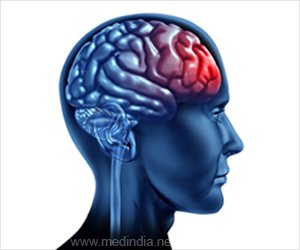Consumer Product-related Traumatic Brain Injuries On The Rise In Children

With 308,000 average annual cases in the United States, such accidents have become frequent among school-aged children participating in sports and playground activities that involve equipment (e.g., bicycling, football, basketball, and soccer).
Traumatic Brain Injuries in Children
New research in the American Journal of Preventive Medicine, published by Elsevier, investigates consumer product-related traumatic brain injuries (CP-TBI) among school-aged children for a 20-year period by differentiating age groups, levels of education, and gender and evaluating trends with the time-point regression method. Their findings reveal insights that have implications for effective preventive strategies and policies.
Advertisement
This serial cross-sectional study utilized data from the National Electronic Injury Surveillance System – All Injury Program (NEISS-AIP) for initial emergency department (ED) visits for CP/TBI from January 2000 to December 2019 for 6.2 million children aged 5-18 years.
The study documents a significant increase in CP-TBI incidents since 2000, accounting for more than 12% of all US hospital Emergency Department visits by school-aged children in 2019, up from 4.5% in 2000.
The rate of increase stabilized overall, after peaking in 2012, to a 3.6% annual level over the entire study period. This may be attributable in part to widespread media attention and public health policies that have resulted in greater risk awareness related to contact sports, increased incident reporting, as well as more effective prevention and treatment.
CP-TBI incidence was higher among boys than girls. However, and significantly, annual percentage increases since 2013 were most elevated in girls, especially those of high-school age.
“While it appears that efforts to decrease TBI in children’s sports have been effective, our findings suggest that more focused efforts are needed among girls,” said lead investigator Tuan D. Le, MD, DrPH, Department of Epidemiology and Biostatistics, School of Community and Rural Health, The University of Texas at Tyler Health Science Center, Tyler; and Research Directorate, U.S. Army Institute of Surgical Research, JBSA- Fort Sam Houston, TX, USA.
CP-TBI not only has a negative impact on the affected individuals, but it affects their families, schools, and healthcare as well.
“Parents, athletic and activity staff and coaches, educators, care providers and support members, and children themselves all need more awareness and training on screening and when to seek care for minor and more severe TBI in children. Improved point-of-care screening needs to be developed and promoted to identify and treat injuries that are not always immediately apparent,” explained Dr. Le.
He added, “Since childhood inactivity is also a serious concern, we are faced with a difficult balancing act: How do we develop awareness on how to avoid high risk activities without discouraging children from taking part in healthy and fun exercise?”
Source: Eurekalert
Source link
#Consumer #Productrelated #Traumatic #Brain #Injuries #Rise #Children



